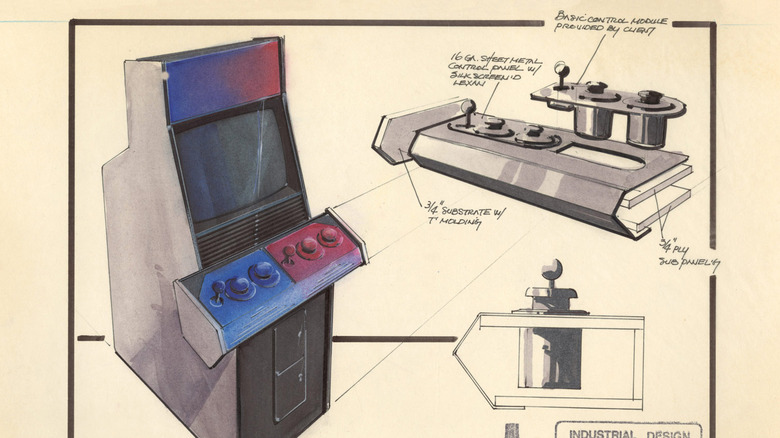The Original Street Fighter Arcade Cabinets Had Punchable Pads Instead Of Buttons
"Street Fighter" is one of the longest-running video game series of all time. Not only has the series lasted so long, but it also has a special place in many gamers' hearts as their favorite fighting game series of all time. When the original 2D fighter "Street Fighter" landed in arcades in 1987, it wowed gamers with its impressive graphics and gameplay. The gameplay was so superb, in fact, that it spawned five mainline sequels, with "Street Fighter 6" launching in 2023. However, despite some similarities in gameplay, the original "Street Fighter" looks much different than "Street Fighter 6."
Over the course of its lifetime, the series has evolved in some major ways. In addition to obvious graphical improvements, the "Street Fighter" series would eventually introduce new mechanics in its sequels that changed up the formula. As it turns out, the starting point for the series was much different than many realize and could have seriously altered the series' trajectory if Capcom had left it the way it was.
As long-time "Street Fighter" fans may know, the original arcade cabinets took the idea that the stronger player wins seriously, with players having to use their fists to score points.
Ryu wasn't the only one throwing punches
Old-school gamers may remember "Street Fighter" as a very different game. Those who approached a "Street Fighter" cabinet in 1987 would notice that the cabinet had no buttons to attack with. Instead, the cabinet had two punch pads and a joystick for each player. One punch pad was for punches, and the other one was for kicks. There were still three attack levels, light, medium, and heavy, like in subsequent "Street Fighter" games. However, because there were no buttons, the strength of the attack was determined by how hard the player hit the pad, meaning players had to perform a heavy punch of their own to see the move in-game (per Polygon).
Shortly after it hit arcades, some reported rumors that gamers were getting injured from punching the pads too hard, although these claims are hard to validate (per EventHubs). According to reports, the pads also caused problems for arcade owners as they were very prone to breaking (via IGN). Capcom would eventually opt to replace the punch-pads with a six-button control pad that has since become a staple of the series. Although punch-pads may have seemed like a good idea at the time, the six-button control scheme proved to be much more successful, and the switch seems to have paid off.


